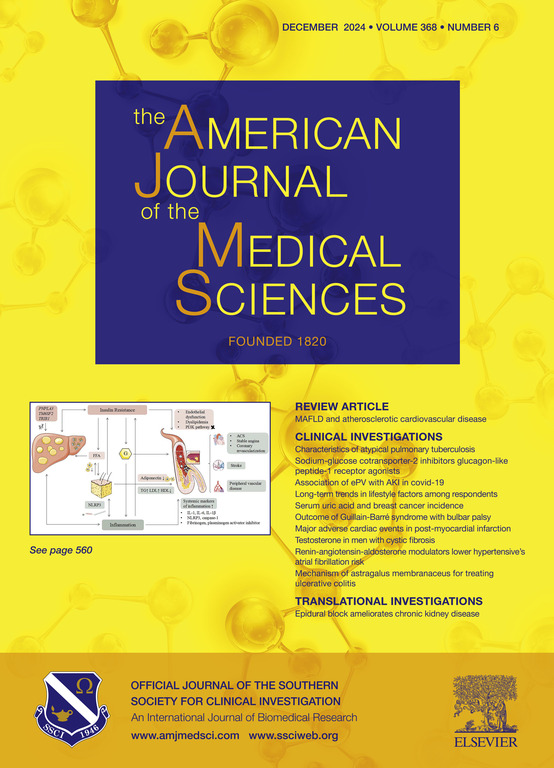Cost analysis of mechanical thrombectomy vs catheter-directed thrombolysis vs anticoagulation alone for pulmonary embolism
IF 1.8
4区 医学
Q2 MEDICINE, GENERAL & INTERNAL
引用次数: 0
Abstract
Introduction
Pulmonary embolism is the third most common cause of cardiovascular death in the US with a high financial burden. Data on cost-analysis is limited in comparing advanced treatment modalities.
Methods
A cohort of patients were selected from a PERT registry database from cases at a tertiary center in a metropolitan area between 2016 and 2023. Patients were treated with either anticoagulation alone, CDT, or MT. The primary outcome was revenue-per-case.
Results
MT had the highest revenue-per-case, with a median (IQR) of $59,058 ($42,827-$86,950) (p < 0.0001). CDT had a median (IQR) revenue-per-case of $19,007 ($14,062-$34,651). Anticoagulation alone had a median (IQR) revenue-per-case of $16,171 ($12,666-$31,473). Margin-per-case closely paralleled the primary outcome. While hospital length of stay, survival at discharge, and 90-day readmission were not different among the groups, ICU utilization was 20 % in anticoagulation patients, 100 % in CDT patients, and 24 % in MT patients (p < 0.0001). CTEPH was identified in 12 % of the anticoagulation group, 12 % of the CDT patients, and none of the MT patients (p = 0.04).
Discussion
MT has a significantly higher revenue-per-case compared with anticoagulation alone and CDT. ICU utilization of mechanical thrombectomy was lower than catheter-directed thrombolysis and near the ICU utilization with anticoagulation alone. Institution policies and device choice may impact these outcomes, which may vary by center.
Conclusions
Advanced therapies that can prevent the downstream sequalae of PE have higher cost but may be more advantageous, and further research is required to evaluate long term benefits.
机械取栓、导管溶栓和单独抗凝治疗肺栓塞的成本分析
在美国,肺栓塞是心血管死亡的第三大常见原因,具有很高的经济负担。在比较先进的治疗方式时,成本分析数据有限。方法:从2016年至2023年间大都市地区三级中心的PERT注册数据库中选择一组患者。患者分别接受抗凝治疗、CDT治疗或MT治疗。主要结局是每个病例的收入。结果:MT的每例收益最高,中位数(IQR)为59,058美元(42,827美元- 86,950美元)(p讨论:MT的每例收益明显高于单独抗凝和CDT。机械取栓的ICU使用率低于导管溶栓,接近单纯抗凝的ICU使用率。机构政策和设备选择可能会影响这些结果,这可能因中心而异。结论:预防PE下游后遗症的先进疗法成本较高,但可能更具优势,需要进一步研究评估其长期效益。
本文章由计算机程序翻译,如有差异,请以英文原文为准。
求助全文
约1分钟内获得全文
求助全文
来源期刊
CiteScore
4.40
自引率
0.00%
发文量
303
审稿时长
1.5 months
期刊介绍:
The American Journal of The Medical Sciences (AJMS), founded in 1820, is the 2nd oldest medical journal in the United States. The AJMS is the official journal of the Southern Society for Clinical Investigation (SSCI). The SSCI is dedicated to the advancement of medical research and the exchange of knowledge, information and ideas. Its members are committed to mentoring future generations of medical investigators and promoting careers in academic medicine. The AJMS publishes, on a monthly basis, peer-reviewed articles in the field of internal medicine and its subspecialties, which include:
Original clinical and basic science investigations
Review articles
Online Images in the Medical Sciences
Special Features Include:
Patient-Centered Focused Reviews
History of Medicine
The Science of Medical Education.

 求助内容:
求助内容: 应助结果提醒方式:
应助结果提醒方式:


